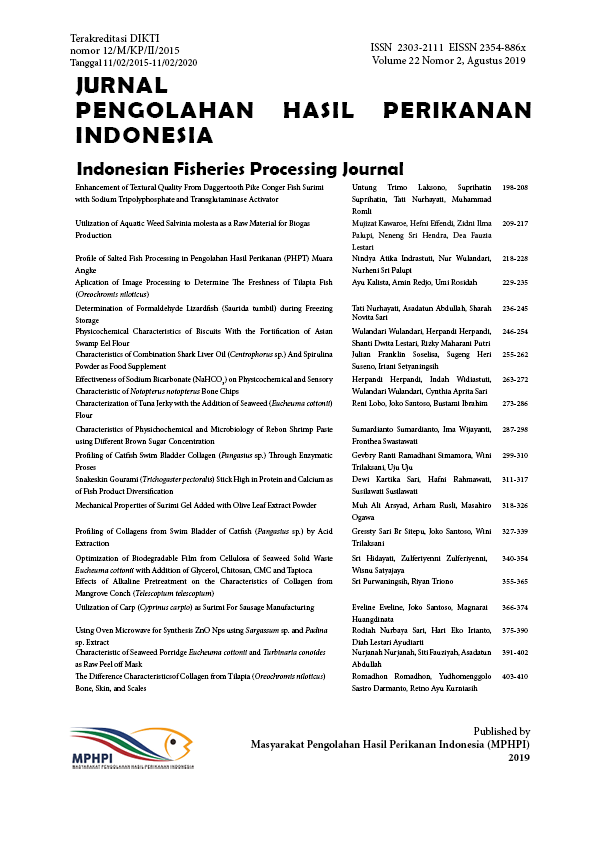Characteristic of Seaweed Porridge Eucheuma cottonii and Turbinaria conoides as Raw Peel off Mask
Abstract
Peel off seaweed masks have active ingredients and antioxidants are needed. The use of seaweed porridge as raw material for peel off masks is an alternative because it zero waste and low production costs. The purpose of this study was to determine the characteristic and the best ratio porridge seaweed of Eucheuma cottonii and Turbinaria conoides as a raw material for peel masks, and also peel masks from the ratio of the best seaweed porridge. The porridge seaweed E. cottonii and T. conoides were characterized including moisture, pH, phytochemicals and antioxidants. The ratio of the best seaweed pulp is formulated for peel off skin masks that characterized by pH, viscosity, dry time, dispersion, antioxidant, and sensory. The results showed that the best porridge ratio of E. cottonii and T. conoides was obtained at a ratio of 1:1 with a pH value of 6.3; IC50 value is 137.36 ppm. Porridge E. cottonii and T. conoides contain a bioactive components. Peeled masks with a 1:1 ratio of seaweed porridge formula have the characteristics of drying time for 25.50 minutes, dispersing power of 5.5 cm, viscosity of 7,200 cP, pH value 6.81, and containing antioxidants 902.58 ppm. Sensory peel off masks seaweed formulas against appearance, color, odor, and texture are no different from peel masks without seaweed formulas and commercial masks.
Authors

This work is licensed under a Creative Commons Attribution 4.0 International License.
Authors who publish with this journal agree to the following terms:
- Authors retain copyright and grant the journal right of first publication with the work simultaneously licensed under a Creative Commons Attribution License that allows others to share the work with an acknowledgement of the work's authorship and initial publication in this journal.
- Authors are able to enter into separate, additional contractual arrangements for the non-exclusive distribution of the journal's published version of the work (e.g., post it to an institutional repository or publish it in a book), with an acknowledgement of its initial publication in this journal.





